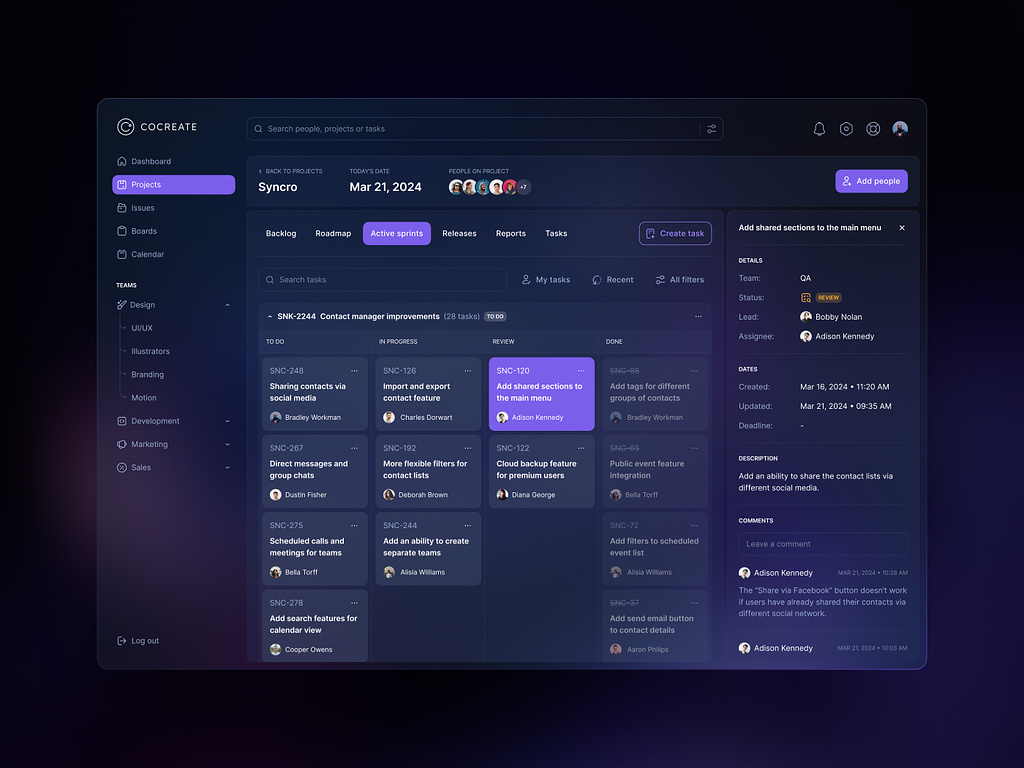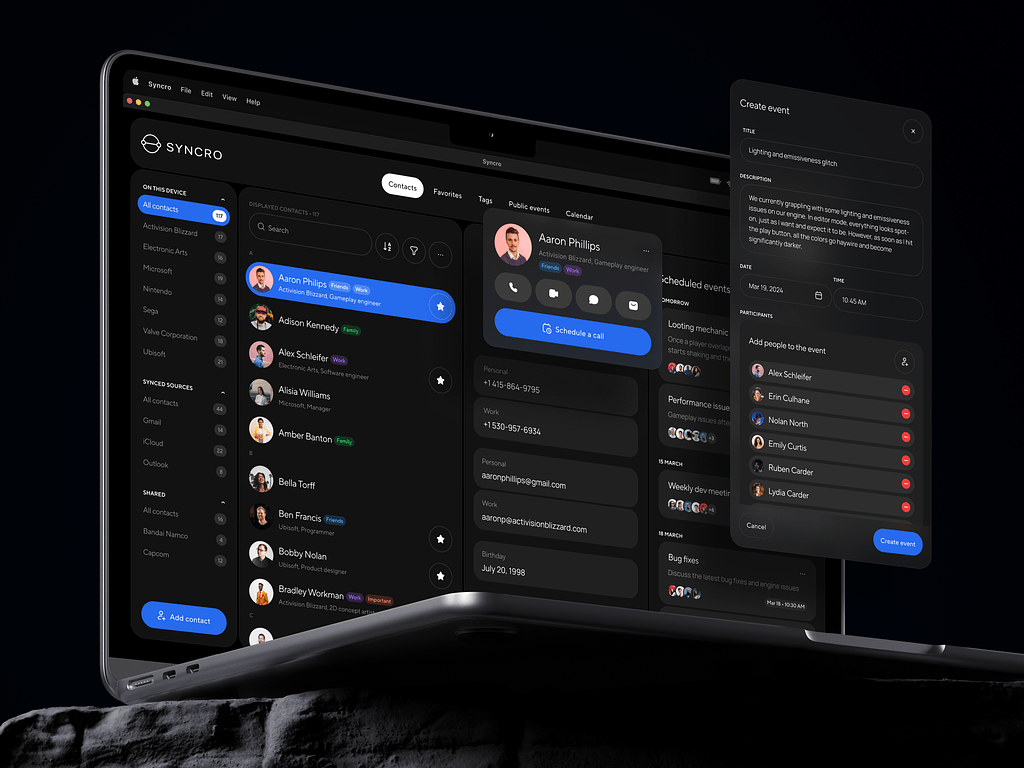When it comes to web development, Angular and React are the two JavaScript frameworks that stand out from the rest. They’re the favorites among developers across the globe because they make it super easy to create awesome and interactive websites and apps that grab people’s attention.
Contents:
According to an annual survey conducted by Stack Overflow, React secured the first position in the list of popular technologies and web frameworks and is used by 42.876% of professional developers, and Angular is used by 19.89% of developers.
But when it comes to choosing between Angular vs React for your next project, it can be a tough decision. Each has its own unique features and strengths, perfect for different types of projects. So, before you make up your mind, it’s important to consider other factors such as your budget, timeline, and how easy they are to learn.
Don’t worry though, we’re here to help you figure it all out! We’ll take a close look at both what is Angular and what is React, explaining what they’re good at, the difference between Angular and React, and much more. By the end, you’ll have a better idea of which one is the best fit for your project.
So, let’s get started!
What is Angular?
Angular is an open-source JavaScript framework developed and maintained by Google. It’s got everything you need to build powerful, single-page web applications (SPAs) and dynamic web pages.
Now, think of a SPA as a website that acts more like an app you’d download, with seamless transitions and updates taking place without needing to reload the whole page. Angular makes this happen by giving you a structured environment to work in.
Angular uses TypeScript, which is like a fancy version of JavaScript, to add features such as type-checking to your code. This helps keep everything organized and much easier to manage, especially when dealing with big and complex projects.
But one of the best things about Angular is how it organizes your code using something called the Model-View-Controller (MVC) architecture. This splits up your code into different parts: the data (Model), how it looks (View), and how users interact with it (Controller). By keeping these parts separate, Angular helps keep your code clean and tidy.
Sure, Angular might take some time to get used to, but once you get the hang of it, it’s perfect for building large-scale web applications.

Team Management UI Design Concept by Shakuro
What is React?
ReactJS is a JavaScript library made specifically for building user interfaces (UI) in web applications. Unlike Angular, which is a full framework, React gives you a more flexible approach. It’s like having a bunch of building blocks that you can put together to make really eye-catching interfaces.
Each component in React looks after its own data and functions, which makes them easy to understand, keep up, and reuse in different parts of an app. React also uses something called a virtual DOM, which is like a blueprint of your web page stored in memory. This lets React quickly spot changes and only update the parts of the real web page that need it.
Believe us, it’s super handy for making dynamic interfaces that are always changing.
Because React is all about UI components and doesn’t force you into a strict structure like Angular does, it’s easier to learn and speeds up the entire development process. That’s why most developers love using it to create interactive features, and single-page apps, and to tap into a huge library of ready-made tools and pieces for all sorts of projects.
Difference between Angular and React
Differences:
The difference between Angular and React boils down to how they approach building web applications.
- Angular is like a complete toolbox with everything you need to build an app included, while React is a library focused solely on building user interfaces.
- Angular organizes your code in a structured way called MVC (Model-View-Controller), while React breaks your app into reusable parts called components.
- Angular automatically keeps your data and the user interface in sync, whereas React makes sure data flows in one direction to keep things straight.
- Angular can be a little harder for beginners to learn because it has a stricter structure and more features, while React is easier to get started with because it’s much simpler.
- Angular is better for complex projects that need a lot of structure and consistency, while React gives you more freedom to choose your own tools and libraries, making it perfect for small-scale projects.
Now that we’ve discussed the differences between React vs Angular, let’s shift our focus to what they have in common. That’s right, despite their differences, there are a few areas where they intersect.
Similarities:
- Angular and React have large communities of developers who help each other out. You can find lots of tutorials, guides, and support online for both.
- There are many tools and add-ons available for both Angular and React. These tools help developers work efficiently and add extra features to their projects.
- They both come with special elements that make it easier to set up and manage your projects, saving you time and effort.

AI Insurance Web Design Concept by Shakuro
Advantages of Angular
At the beginning of the blog, we covered exactly ‘what is Angular’. Let’s move on to learn what makes it so popular. Here’s a closer look at a few advantages of the Angular framework that make it stand out in the debate of React JS vs Angular:
- All-in-one package
Angular gives you everything you need to build web apps right from scratch. You don’t have to look for extra tools or libraries.
- Better code quality
Angular uses TypeScript, a programming language similar to JavaScript but with extra features. It helps developers write code with fewer mistakes and keeps it neat. This makes the code easier to understand and work with, which is really important when working on complex apps for large enterprises.
- Improved performance
Angular’s hierarchical dependency injection system is a major upgrade over AngularJS. Now, classes don’t rely on each other directly but use external sources when needed. This makes Angular mobile apps run faster compared to older versions like AngularJS.
- Hassle-free updates with Angular CLI
Angular CLI (Command Line Interface) is easy to install and use, making it beginner-friendly. It comes with multiple handy testing tools, simple commands, and support from a wide range of developers and platforms. Plus, it makes updating components, even those with third-party parts, super simple.
- User-friendly design
With Angular, developers can easily add ready-to-use design elements inspired by Google Material Design to their mobile apps. These elements include things like navigation menus, forms, pop-ups, and tables for organizing data. By using these elements, developers create apps with a sleek yet user-friendly look, making them a hit among users for a long time.
Advantages of React
When it comes to Angular vs React, then it’s hard to overlook some of the advantages of the React framework.
- Saves time
With React, app development companies can reuse code components at different levels whenever required. Moreover, these components are completely isolated, so changes in one don’t affect others. This results in error-free mobile app development, ultimately saving developers a lot of time and effort.
- Simplified testing
React makes testing easier by using Redux. Redux helps manage component states in large and complex apps with various dynamic elements. With Redux, developers can store the app’s state in one place, so every component can access it without complicated setups such as using callbacks or child components. This makes testing and tracking data changes much simpler, especially when using helpful tools like hot reloading.
- Better code stability with one-way data binding
In React, developers work directly with components and use downward data binding. This ensures that changes in child entities don’t affect parent entities, making the code more stable and adaptable for future development.

Contact Manager App Design Concept by Conceptzilla
Final Verdict: Which is Best?
As the blog comes to an end, it’s time to answer the million-dollar question: Angular vs React, which one is the best? Well, there isn’t a one-size-fits-all answer to this question. It all depends on what you need for your project.
Angular is great for big projects where structure and scalability are important. It’s backed by Google and has a lot of built-in features like TypeScript, making it a top choice for enterprise-level applications.
React, on the other hand, is more flexible and easier to learn. It’s perfect for building user interfaces and single-page applications because of its component-based approach.
Ultimately, it really comes down to what you’re trying to build and what your team is comfortable with. Both Angular and React are powerful tools that can help you create amazing web applications– it’s just a matter of finding the right match for your needs.
Still unsure about which framework to go for between JavaScript React vs Angular? Reach out to Shakuro today and let us help you bring your web and mobile application ideas to life!
